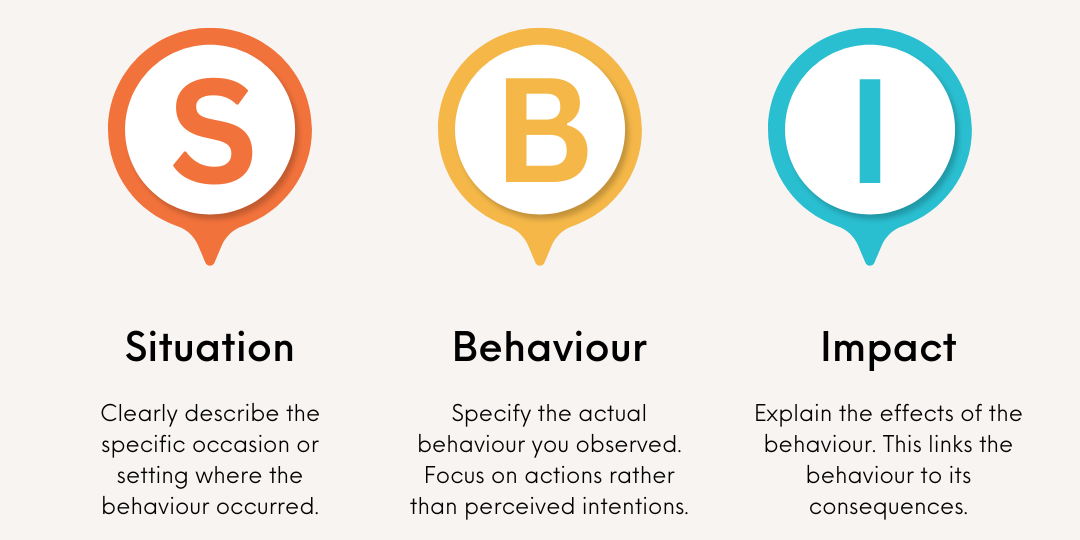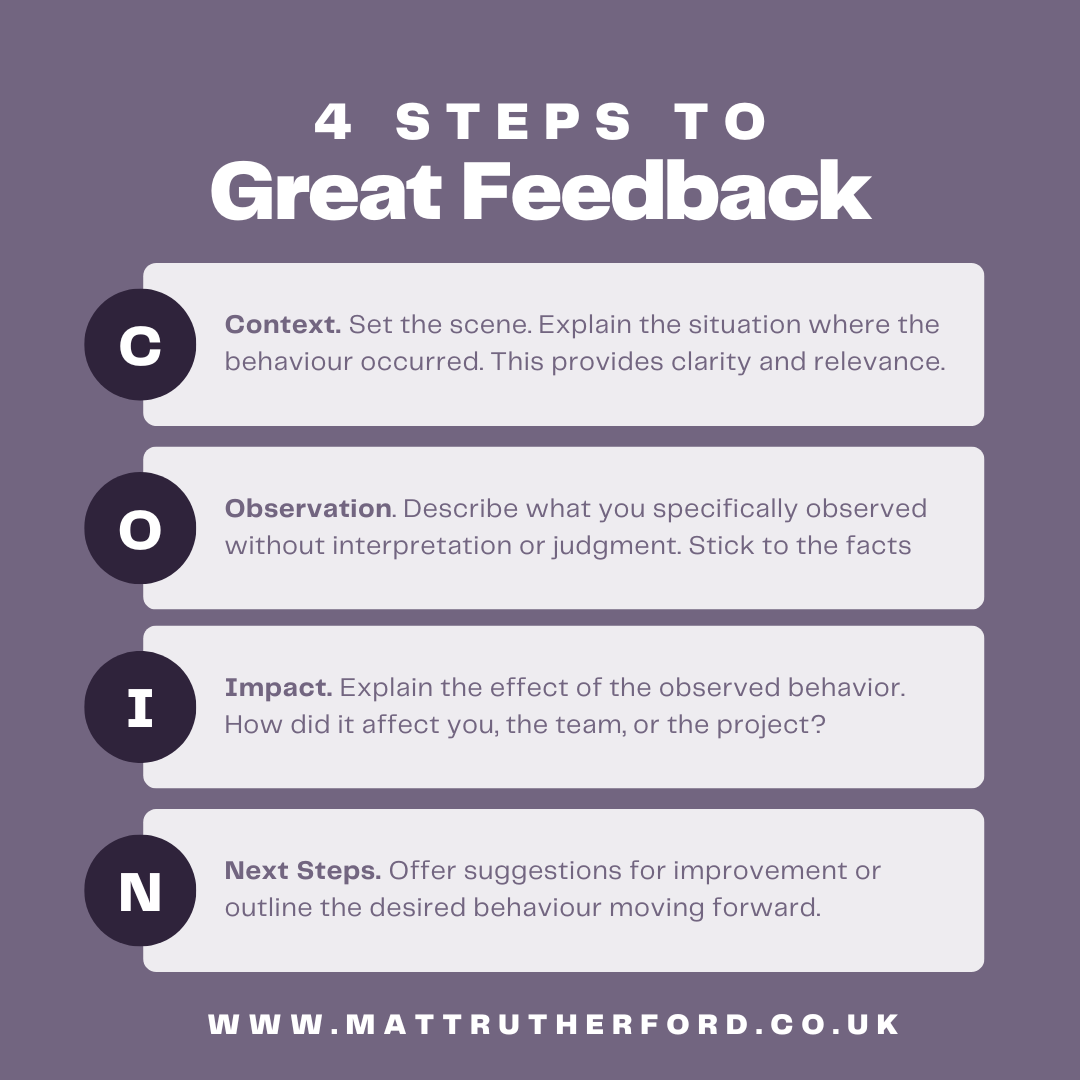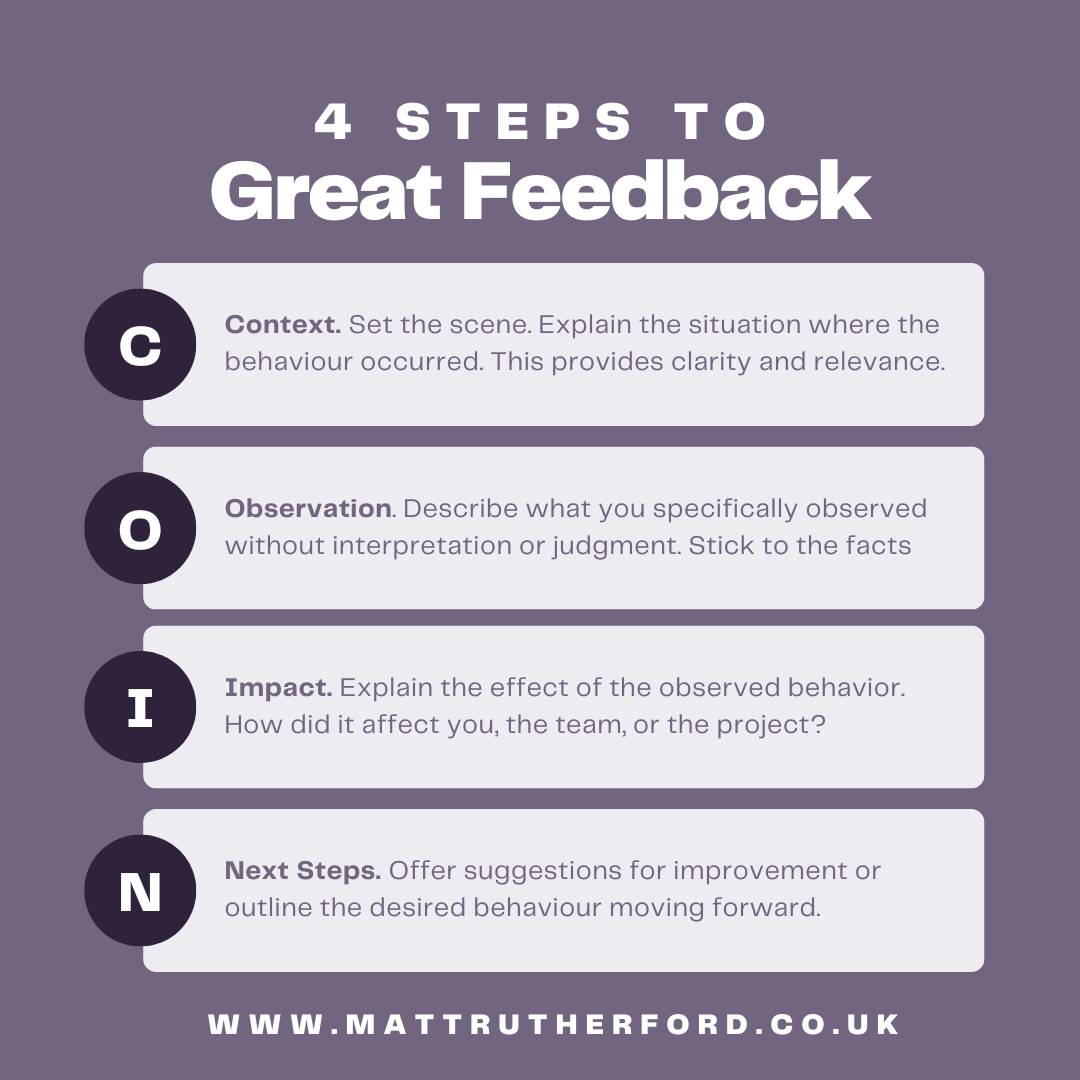Effective feedback is the currency of personal and professional growth. Whether you are a manager, team member or parent, how you deliver feedback can make a difference.
The COIN model is a framework designed to make feedback clear and actionable. Let’s dive into what the COIN model is and how you can implement it for success.
My essential guide to another great feedback technique is here...
Mastering feedback with the ‘Situation, Behavior, Impact’ model.
Giving feedback can be a minefield. An effective way to give feedback with clarity is the “Situation, Behavior, Impact” model.

Understanding the COIN Model
The COIN model stands for:
- Context
- Observation
- Impact
- Next Steps
Each step of the model plays a crucial role in ensuring that your feedback is well-received.
- Context. Set the scene. Explain the situation where the behavior or action occurred. This provides clarity and relevance.
- Observation. Describe what you specifically observed without interpretation or judgment. Stick to the facts
- Impact. Explain the effect of the observed behavior. How did it affect you, the team, or the project?
- Next Steps. Offer suggestions for improvement or outline the desired behaviour moving forward.

Actionable Tips for Implementing the COIN Model
- Be Specific. Avoid vague language. Specific feedback helps the recipient understand exactly what to change.
- Stay Objective. Focus on the behaviour, not the person. This reduces defensiveness and promotes openness.
- Be Timely. Give feedback as close to the event as possible. Fresh context leads to better understanding.
- Encourage Dialogue. Invite the recipient to share their perspective. Feedback should be a two-way conversation.
- Practice Regularly. Make feedback a routine part of your interactions. This helps to build a culture of continuous improvement.
Roleplay Examples
Here are five roleplay scenarios to illustrate how to use the COIN model effectively:
Example 1: Peer-to-Peer Feedback
- Context. During Last week’s team meeting...
- Observation. ...you interrupted several colleagues while they were speaking.
- Impact. This made it difficult for others to share their ideas and slowed our decision-making.
- Next Steps. I suggest that we try to wait until someone has finished speaking before we jump in. Maybe we can use a signal to indicate we want to add something.
Example 2: Manager to Employee
- Context. On the recent project deadline...
- Observation. ...you submitted your report two days late.
- Impact. This caused a delay in our overall project timeline and increased stress for the team.
- Next Steps. In the future, if you foresee any delays, please communicate them in advance. Then we can adjust our plans accordingly.
Example 3: Teacher to Student
- Context. During yesterday’s class discussion...
- Observation. ...you were using your phone during the lesson.
- Impact. This distracted you from the discussion and impacted your understanding of the material.
- Next Steps. Going forward, Please keep your phone away during class. This will ensure you’re fully engaged in the learning process.
Example 4: Parent to Child
- Context. At dinner...
- Observation. ...you didn’t clean up your plate after eating.
- Impact: This left extra work for someone else and slowed down our evening routine.
- Next Steps: After meals, please remember to take your plate to the sink and rinse it off.
Example 5: Colleague to Colleague
- Context. During yesterday’s client presentation...
- Observation: you provided very detailed explanations that extended the meeting by 20 minutes.
- Impact: This left less time for the Q&A session and some clients had to leave before they could ask their questions.
- Next Steps. In future, I suggest keeping your explanations concise. This will allow more time for client interaction.
Takeaways
- The COIN model is a straightforward way to deliver feedback.
- By using the COIN model, you can build feedback that is constructive and actionable.
- The goal of feedback is not just to critique but to build a pathway to improvement and success.
- Implementing the COIN model can transform and improve interactions.








Member discussion